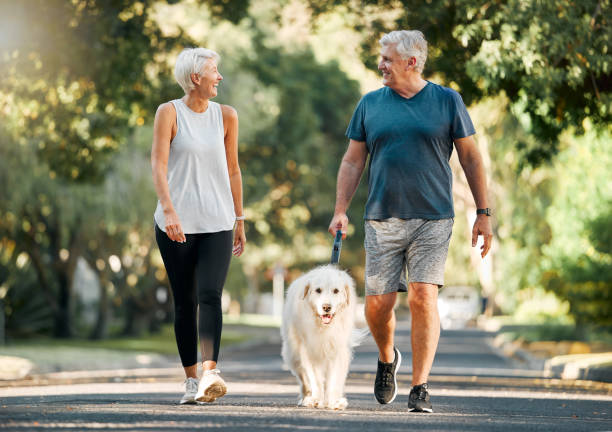As individuals age, maintaining physical activity becomes not just a matter of wellness but a cornerstone of independence, mental clarity, and quality of life. Yet the same workout that benefits a 30-year-old may not be suitable—or safe—for someone in their 70s. This is where the importance of tailoring exercise programs to individual needs in senior fitness truly comes into play.
Aging brings about physiological changes such as reduced bone density, muscle mass loss, and joint stiffness. Add in chronic conditions like arthritis, heart disease, or diabetes, and it becomes clear that a one-size-fits-all approach to exercise is not only ineffective but potentially harmful. A personalized program respects these limitations while leveraging individual strengths, promoting progress without overexertion.
Contents
Key Components of a Senior Fitness Program

A well-rounded exercise program for seniors typically includes four main components: cardiovascular endurance, strength training, balance and flexibility, and functional movement.
Cardiovascular exercises such as walking, water aerobics, or cycling help improve heart health and stamina. However, the intensity must be carefully moderated based on medical conditions and baseline fitness levels. For some, even brisk walking may need to be gradually introduced and closely monitored.
Strength training is essential for combating sarcopenia—the age-related loss of muscle mass. Resistance bands, light dumbbells, or even body-weight movements can be highly effective when scaled appropriately. Proper guidance ensures that exercises target major muscle groups without straining joints or exacerbating existing injuries.
Balance and flexibility exercises help reduce the risk of falls, a major health concern among the elderly. Tai Chi, yoga, and guided stretching can significantly enhance coordination, joint range of motion, and confidence in movement.
Functional fitness focuses on exercises that mirror everyday movements—like sitting, reaching, and lifting groceries. These practical movements are not just about strength or balance, but about maintaining autonomy in daily living.
Assessing the Individual: The Starting Point
Before any program is designed, a thorough assessment should take place. This includes a review of medical history, current medications, mobility levels, and cognitive function. Functional assessments such as grip strength, balance tests, or gait analysis can provide valuable insight into a senior’s capabilities and limitations.
Just as importantly, personal preferences, lifestyle habits, and psychological readiness must also be taken into account. A senior who enjoys gardening may benefit from exercises that enhance squatting, lifting, and upper-body endurance. Meanwhile, a retiree who enjoys dancing may thrive with rhythm-based cardio sessions.
Adaptive Programming for Chronic Conditions
Chronic health issues often come into play when designing exercise routines for seniors. Fortunately, adaptive fitness programming makes it possible for almost anyone to stay active, regardless of their condition.
For example, individuals with arthritis benefit from low-impact activities like swimming or chair yoga. Resistance training is particularly beneficial for those with type 2 diabetes, as it helps regulate blood sugar levels. Heart disease patients must be monitored closely, but can still engage in low-intensity, heart-friendly routines to build endurance over time.
Exercise professionals working with seniors must be well-versed in modifying routines—whether that means shortening workout duration, incorporating more rest periods, or using assistive equipment. With proper adaptation, fitness becomes accessible instead of intimidating.
The Role of Motivation and Social Engagement
One of the most overlooked yet essential factors in senior fitness is motivation. Seniors are more likely to stick with a program that is enjoyable, emotionally rewarding, and socially engaging. Group classes—whether in community centers or virtual formats—offer not just physical activity but a sense of camaraderie and accountability.
Goal-setting is also critical. These goals should be realistic, specific, and meaningful. For one person, it might be walking to the mailbox without assistance; for another, it could be climbing a flight of stairs to visit a friend. Achieving these benchmarks reinforces a sense of purpose and progress.
Monitoring Progress and Adjusting Accordingly
Fitness is a dynamic journey, and programs must be reevaluated periodically. As strength, mobility, and confidence grow, new exercises can be introduced to sustain improvement and prevent plateaus. Conversely, if a senior experiences a health setback, the program should be scaled back without discouragement.
It’s important to track not only physical progress but also psychological well-being. Many seniors report improved sleep, reduced symptoms of depression, and a renewed sense of vitality as they continue with a personalized fitness routine. These holistic benefits affirm that fitness in later life is about far more than numbers—it’s about restoring a sense of control over one’s body and lifestyle.
Conclusion: Empowering Independence Through Individualized Fitness
Senior fitness is not a matter of pushing limits, but of honoring them—while still challenging the body to maintain strength, mobility, and resilience. A customized exercise program, grounded in safety and enriched with personal meaning, empowers older adults to lead active, independent lives. By focusing on individual needs rather than generic protocols, we shift the paradigm from simply aging to aging well.
